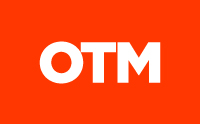As upheaval shakes the insurance sector, a new approach can help you stay relevant to customers.
Insurance commentators are pretty unanimous that the sector is in flux. Today’s industry finds itself in uncharted waters, faced with a barrage of cruelly synchronised “known unknowns” that have the power to reshape it fundamentally.
Regulators are increasingly hard to second-guess; cyber security is ever more complex. The potential to micro-tailor products using big data is held in check by privacy concerns. And, most importantly, a new breed of customer is among us. These customers’ expectations are shaped by new retail paradigms, increased consumer choice and a digital-first environment, as well as an openness to “lifestyle ecosystems” that combine complementary services in exciting ways.
As a result, the way insurance is conceived and sold is changing, with InsurTech disruptors, utility companies and feisty new players like Lemonade chipping away at the incumbents’ rule. However, the greatest source of complexity (and therefore confusion) may be the growing need to serve customers in a supple, joined-up way across an ever-changing array of channels – a discipline that other industries, retail in particular, are further down the road to mastering.
The situation has prompted detailed consideration from experts like Deloitte, who were moved to end their 2019 Insurance Industry Outlook with the question:
“where do insurers fit in an evolving economy and society?” (1)
Inertia and its antidote
Complexity breeds confusion, which leads to inaction. With so many variables in play, there’s a real danger of inertia as insurers struggle to implement strategies that will ensure they remain relevant to their existing audiences, while adapting their service (and messaging) to emerging opportunities. Often, there’s a temptation to fall back on “what we know” – especially if that knowledge is enshrined in expensive, exhaustive, persona-based research, even if it’s several years old.
The strongest antidote to inertia? Action. We’ve encountered client after client weighed down by conflicting options and the received assumptions of their industry, and desperate for a practical breakthrough. Often, their marketing messages just aren’t landing; already-stretched budgets are going to waste.
For us, the answer lies in rethinking the way we understand individual groups of customers and how we connect with them.
Anti-process, pro-affinity
Here’s the thing about research “personas”: they don’t work. Why? Because they’re demographic, behavioural and psychographic constructs, not real people. Personas don’t live in our real, fluid, unpredictable world, or interact in an ongoing way with your brand. They don’t have a story to tell.
Unlike real people, marketing personas can lead us to make assumptions about what customers actually think (“if you conform to these criteria, this is how you must see the world”). That’s why OTM developed Human Affinity, a practical insight model that roots your marketing activity firmly in the real world of the customer. It’s an approach that has proved hugely successful in reaching new audiences and affecting behaviour.
The way we interact with a brand is a function of our personalities. For an industry like insurance, whose new wave of customers is increasingly receptive to emotional, higher-Maslowian values like belonging (2), it’s an especially fresh and fertile area.
By talking to small customer groups on an ongoing basis, and by employing new, searching lines of enquiry, Human Affinity allows us to segment groups of people based on personality. This is then used to plan and craft messaging that actually works.
When budgets are stretched, there’s a temptation to focus on big, over-arching brand messages that “speak to everyone”. In practice, these end up being homogenised and diluted, aimed at a broad audience which mostly wasn’t listening to begin with.
But let’s look at the alternative. How about identifying key audiences and reaching out with genuinely relevant propositions and messaging? With careful planning and astute use of digital channels, multiple targeted campaigns can be run concurrently – without having to pay for an entirely new campaign every time. If the retail industry is doing this, so can we.
Human Affinity allows us to identify, reach and serve these specific groups, offering clear, cost-effective and actionable routes that yield a visible return. Some may be niche, some broader. Some may use conventional channels, others a cocktail of online, social media and mobile apps to build rapport. The point is, they hit home. The successes and insights we gain from this approach can then feed into a more robust overall brand message, while helping to guide the development of new services.
As well as providing better ROI, Human Affinity is also designed to continue working over the long-term, as an ongoing conversation with customers. Regular conversations with these audiences ensure we keep our understanding fresh, and always have a dynamic foundation on which to base new messaging and our choice of channels. So, no matter how your audience changes, you’ll always be giving them what they need.
Tim Sennitt.
Sources:

